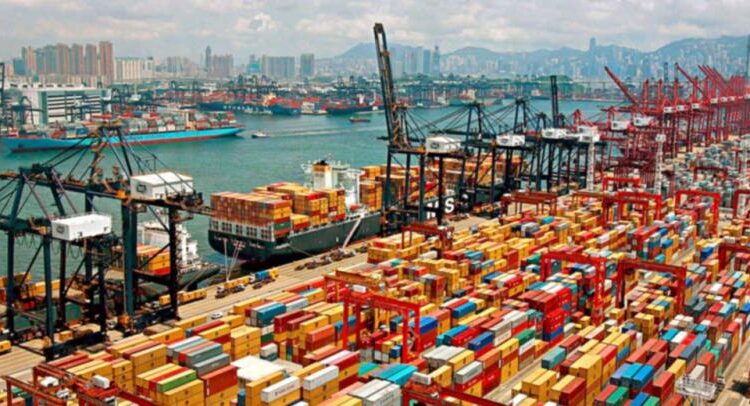
China’s slacking imports, slowing exports peril global economic recovery
BEIJING : Chinese imports plunged and export growth slowed down in April as the recovery waned, raising concerns about the country’s ability to boost the global economy.
Overseas shipments expanded 8.5 percent from a year earlier to $295 billion, the customs administration said in Beijing on Tuesday — slowing from the double-digit gain in March. Imports, though, dropped 7.9 percent to $205 billion, much worse than the median projection of a 0.2 percent decline. That left a trade surplus of $90 billion for the month.
The unexpected import plunge spells trouble for economies that had been expecting China’s emergence from Covid Zero to fuel their own export growth. The recovery so far has mainly been driven by consumer spending, rather than infrastructure and property investment. That’s reduced demand for commodities such as crude oil, iron ore and copper — imports of which dropped in April from the prior month.
“Neighboring countries such as Japan and South Korea are disappointed as they had expected positive effects from China’s reopening on their economy,” said Ding Shuang, Chief Economist for Greater China and North Asia at Standard Chartered Plc.
Exports were aided by a favourable comparison with this time last year when Shanghai was in lockdowns. Economists caution that rising prices and interest rates in the rest of the world, high inventory levels, and the war in Ukraine will serve as brakes on global consumer demand — meaning any increase won’t last forever.
China’s strong exports “can’t last if the US is weakening and Europe’s economy is kind of flat”, said Iris Pang, Chief Economist for Greater China at ING Groep NV in Hong Kong.
The dropoff in imports also suggests there is more reason for worry about the sustainability of China’s rebound.
“Imports were quite disappointing, and would add concerns to China’s demand recovery story,” said Xiaojia Zhi, Chief China Economist at Credit Agricole CIB in Hong Kong.
She suggested that the price drops in import items including energy products may be dragging on the headline figure. Tech imports contracted due to the global slowdown in electronics demand and the relocation of supply chains.
“Don’t be fooled by headline export figures from China that show shipments growing in April compared with last year, when the figures were depressed by pandemic lockdowns. The real picture is much weaker,” said Bloomberg economist David Qu.
The trade data has also stirred speculation about whether authorities will take more supportive actions to help the economy.
Analysts from Guotai Junan Hong Kong Ltd see a policy rate cut this quarter as “increasingly likely.”
Pang of ING also sees possible government support in the future, given how much the deteriorating global economy will impact China’s manufacturing sector.
She floated potential options including support for the industry’s labor market through electric vehicle subsidies, increasing the speed of infrastructure project deliveries or other means.
